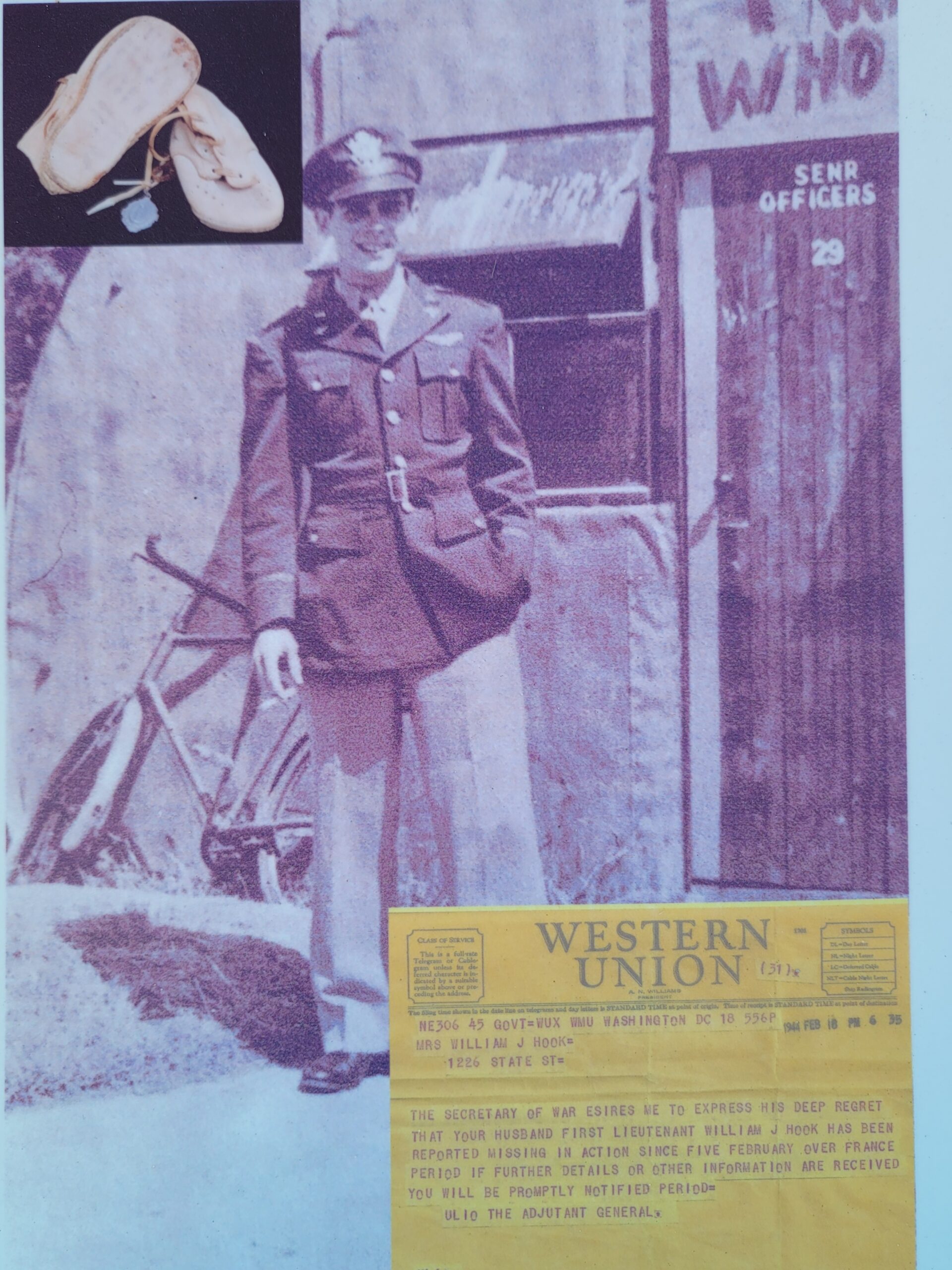A Snapshot of Myrtle Beach in the ‘40s Via the Lens of a WWII Navigator
by Melissa LaScaleia
Lieutenant William J. Hook was born on March 12, 1917, in Albany, New York. A lover of music, he played the trumpet in a band in college. He graduated from Union College in Schenectady, New York, then attended Albany Law School. His career plans were to be put on hold however; after Pearl Harbor was bombed in 1941, William joined the military. He enlisted in the Army Air Corps, the precursor to the Air Force, and completed military training in Georgia and Alabama. He finished pilot training at the Myrtle Beach Air Force Base, but his less than perfect vision disqualified him from flying planes, and he became a navigator, responsible for keeping a plane on course, instead.
William married Frances Downs, from Schenectady, in 1942. When William was stationed at Myrtle Beach, the new couple lived in a bungalow by the ocean. At that time, there was a movie theater and a grocery store in town and not much else. Their daughter, Gail, was born on April 12, 1943. A few months later, William was deployed overseas to England, and took his daughter’s baby shoes with him as a memento. With her husband’s departure, Frances returned to her hometown of Schenectady. William would never see his family again; his fatal mission was in February 1944, when his B-26 Marauder and two other American planes were shot down over France. His body was never recovered.
Today, Gail lives in upstate New York, and in a phone call, shares a bit of the information that she knows about her father and that time.
“My father always took my baby shoes with him when he went flying on missions,” she says. “They were his good luck charm. He made a little marking on the bottom of one shoe every time he flew. But his last mission, he forgot to take them— because he was never supposed to go. He flew with a different pilot in a different plane and the shoes were left behind.
“My dad was the love of my mom’s life,” she continues. “She never wanted to speak to me about him very much. Eventually she remarried and gave birth to my half-brother, Rick. He also joined the military— the Army and the Navy— and flew helicopters.
“Decades ago, when you would go to the movie theater to see a movie, they would show a newsreel beforehand. They made a news segment over in England, and my dad was in it. And they mentioned my baby shoes. It was so touching to me to think that they found this clip. And Rick was able to save it for me so I could rewatch it.”
Gail never visited Myrtle Beach until thirty years ago. But now, she and her husband return to her birth town every winter.
“One day, my husband saw an article in the newspaper about how the city was planning to create a military museum in the Market Common to commemorate the soldiers and people who had been active at the Myrtle Beach Air Force Base,” Gail says. “We attended a planning meeting that they hosted, and they shared that they were looking for people to donate things for the museum. I gave them my dad’s uniform. There was never a cemetery spot for him, and it was nice to have a place to go and think about him.”
The streets of the Market Common are almost universally named for those who served at the Myrtle Beach Air Force and made a significant impact while doing so. Joe Dietrich, a passionate military-history buff who lives on the corner of Peterson Street and Hook Ave., contacted the city and asked them to place a plaque to commemorate the life of Lt. Hook. One day, he overheard a group of youngsters wondering if Hook Ave. was named after the character Captain Hook from the story Peter Pan; Joe wanted the community to be aware of the life story of the WWII veteran and the true meaning behind the street’s designation.
Since William has no gravesite, Joe drilled a hole in the cement foundation in front of the plaque and annually puts a small American flag that all veterans receive at their grave on Memorial Day; he also puts one there for the Fourth of July and Veterans Day.

















